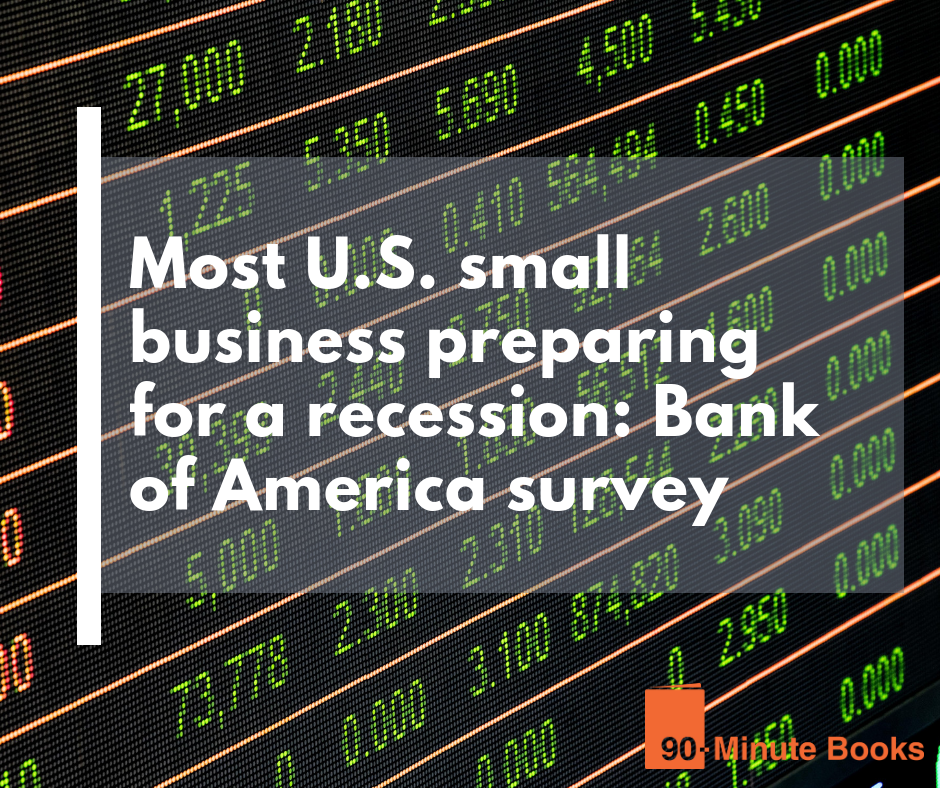What does it take to be a successful marketer?
It appears that the research has already been completed, so there is no longer any requirement to speculate. Fractl employed IBM’s Watson Personality Insights API in 2019 to identify the essential characteristics and attributes of 20 famous branding gurus globally.
Findings from the study demonstrated that the primary quality shared by some top-level marketing professionals was having an adventurous spirit. Following that, these individuals exhibited high levels of energy, boldness and assertiveness, and intelligence.
This is intriguing because individuals known for their effective presentation abilities often demonstrate similar characteristics.
One must exhibit a degree of boldness to volunteer to exhibit in front of an audience. If you don’t have a lot of energy, it will be difficult to maintain people’s interest. If you fail to be assertive, it will be difficult to effectively express your thoughts. The list goes on.
That’s not a coincidence. To succeed in marketing, it is essential to have exceptional presentation abilities.
3 Reasons Presentation Skills Are Important in Marketing
In a way, marketing is one big presentation. We show ourselves to the world when creating a blog post or participating in a podcast. By investigating our viewers, we attempt to gain a better knowledge of the type of content they would like to view and grasp from our demonstrations.
Put simply, outstanding presentation abilities influence essentially every element of marketing. If you can deliver an incredible presentation, you can:
1. Having Good Presentation Skills Drive Trust in Your Brand
What makes people trust brands? According to a global survey from PR and marketing consultancy Edelman, it boils down to three key factors:
- Product experience: The most important factor is that 87 percent of respondents cited their experience with a product as a reason to trust a brand.
- Customer experience: 56 percent of consumers said their own experiences with a brand play an important part in building trust.
- Societal impact: 38 percent of consumers believe a brand’s impact on society is important in assessing its trustworthiness.
Nevertheless, a more significant point is the basis of all this. Without having the ability to effectively present, possible clients won’t be aware of any of these details!
If you don’t boast about the caliber of your product, showcase your amazing reviews, or establish that you are devoted to improving the world, how is anyone supposed to know if they can rely on you?
2. Presentation Skills Help Create Brand Awareness
Have you ever thought about why people tend to interact more with individual social media accounts than those of businesses and organizations? It is simpler to market to an individual than to an organization.
Attending conferences, mingling at networking engagements, and participating in other such activities greatly raise a brand’s visibility. It gives your company a personal aspect, making it quick to recognize, easier to connect with, and more likely to be remembered. When we hear the names, we automatically link Apple, Microsoft, and Tesla to Steve Jobs, Bill Gates, and Elon Musk.
3. Use Your Presentation Skills to Drive Sales
Strong presentation abilities can be a powerful tool to promote your item.
The Chief Marketer found that face-to-face events make up the second biggest amount of leads for B2B organizations and also offer the second highest return on investment among any of the channels in sales.
Indeed, not all survey participants would officially be speakers at the events. Still, they would certainly use the events to reach potential customers. This could involve talking to them at their display stands, during networking sessions, or even waiting for something to eat or drink.

FREE BOOK
Discover the 5 Compelling Book Titles Types that create an ‘I Want That…’ response.
How to Develop Your Marketing Presentation Skills
At this stage, I hope you concur that good presentation abilities are imperative for modern advertisers. Let’s examine how we can refine those abilities to reach your marketing goals.
1. Set Goals for Developing Your Presentation Skills
Start by defining exactly what you want to achieve, such as:
- becoming a better (or first-time) conference speaker
- delivering more impactful training sessions
- speaking more persuasively to leads
- engaging potential prospects at the top of the sales funnel
- honing your pitch presentations
Also, give yourself a deadline. Focus on improving your public speaking specifically for an upcoming conference or networking event instead of simply working on constructing presentations in general. Register to be a speaker quickly; you are responsible for fulfilling your commitments.
2. Research Your Audience
In addition to just practicing more, there is another highly successful path to gaining confidence speaking in front of a crowd: Gathering information.
Considering it, feeling like an imposter is yet another cause that makes people unwilling to do public speaking. We are afraid we will be discovered to be liars and deceivers who do not know what we are discussing.
Making sure you have done extensive research into who your target audience is will protect you from feeling uncertain. When you clearly understand the audience you are addressing, constructing an efficient presentation is substantially more straightforward.
3. Incorporate Humor and Stories
Throughout the ages, storytelling has been one of our most successful tactics for swaying, motivating, and educating others.
Consider this; another beneficial way to enhance your presentation abilities is to cultivate your abilities in narration. Rather than just explaining how a particular approach can increase profits, provide tangible, realistic examples so the audience can relate to your advice about their situation.
Do not underestimate the capacity to utilize humor to draw in a crowd.
4. Practice in Front of an Audience
A common phobia is the fear of having to speak in public, otherwise known as Glossophobia. A widely cited Gallup poll conducted long ago stated that the second biggest fear among Americans is experienced by 40 percent of survey respondents.
Evidently, it is not the act of talking that makes us anxious. The notion of performing in front of a crowd. What if we make a mockery of ourselves or speak incorrectly and get jeered from the platform?
In my experience, although it’s not pleasant, the most effective approach to overcoming this issue is to look for chances to talk in front of a crowd. This can be in your professional or personal lives. It can be as easy as uttering some phrases with family or delivering mini talks to your group at work.
10 Tips On How To Improve Presentation Skills
Giving presentations and engaging in public speaking can stir up various feelings. The more outgoing people among us might feel unease in their hearts, but they force themselves to ignore it because of sheer grit. While some of us immediately experience sweaty hands and growing fear in our throats. No matter what group we are part of, we are all attempting to find methods to enhance our communication ability. We strive to eliminate worries about being evaluated by a large group of people.
Have you ever wondered how to enhance your presentation abilities? Look at our 21 presentation tricks – they can be used by anyone, from teachers to scholars.
1. Make a good first impression.
This is a recurrent query. Therefore, volumes of resources are accessible to one’s disposal regarding selecting suitable attire for a presentation. In the end, comfort and tidiness are crucial for the ensemble. What’s talked about less is how you actually look. The instant you’re perceived as the presenter, whether that’s coming into the room, on the stage, or virtually, your listeners form a bunch of opinions about you before you have to utter a sound. This may seem a bit daunting, yet it is truly a positive! The way you present yourself with a confident posture and body language will be picked up by the people you are addressing before they even notice your hair and wardrobe.
2. Play with intonation and melody.
How we express ourselves verbally is not always as important as how we voice it. You want your audience to be engaged with what you are saying. Why is it that when one person speaks in front of an audience, it tends to be unpleasant and grating, while another is captivating and stimulating? Essentially, one requires you to put in a lot of effort to listen, while the other is doing all the labor for you. How one speaks greatly affects their delivery, including pitch, inflection, and rhythm.
3. Don’t forget to pause
Pausing is an important and versatile tool. It pauses between different tones or ideas, allowing the listener to reflect on what was just said before something new is presented. Insert pauses as “mini-breaks” between your ideas to stay in command and captivate the audience.
4. Know what you want to say.
Outline the goal of your presentation before developing any material to ensure you stay on track and do not digress. Consider the impression you want to make on your audience. Do you want them to come away feeling inspired? Delighted? Motivated? Would you like them to purchase your item, cast their ballot for you, or transform their life in some capacity? Every slide shown and every point brought up during speaking should directly relate to the goal.
5. Have structure
Beginning, middle and end. This formula will assist you in calming down when speaking. Start with ten to fifteen percent of the total time devoted to your introduction, follow it up with approximately three-quarters of the time allotted to the body of your presentation, and at the end, wrap up with the last ten percent of your speech. Once you have an outline, concentrate on the three main topics you want to convey to your listeners and keep them at the top of your mind while you are giving your talk. It may be enticing to create a lengthy list, but if you can limit it to three items, you will be more likely to make sure they are fully understood and provide an interesting speech.
6. Deliver your points
If we avoid making eye contact with our audience or listener when we talk, it implies that we are not particularly interested in them. If we focus our attention, make our voices heard, and look directly at the person we are speaking to, then our message will show that we are invested in the conversation and are determined for them to comprehend what we are saying.
Successfully conveying your thoughts means that your vocal tone, facial expression, and gaze unite to truly give your audience your ideas.
7. Practice does make perfect.
It is clear, but frequently disregarded; continual practice is the best way to prepare for an important presentation. If you’re getting ready for an in-person presentation, it’s a good idea to practice what you will say by speaking aloud, either in front of a mirror or with someone else. Organizing a Zoom gathering and filming yourself while presenting would be advantageous if you are getting ready to present virtually. Be courageous enough to observe yourself again – you will be astonished by what you observe. Take note of major ideas and words you want to emphasize in your presentation.
8. Transform nervous energy into enthusiasm.
When you think of Abraham Lincoln or Mahatma Gandhi, their enthusiasm and ardor probably come to mind, not their apprehension. The necessity to voice their opinion overpowered their fear of speaking in public. To channel their skills in public speaking and confidence, look at your prepared remarks and ask yourself:
- What are my goals for the audience?
- What am I giving them?
- Will they be moved?
- Will this make them feel relief or pain?
Keep returning to the parts of your message that meet the desired objectives, and explain why they are necessary.
9. Make eye contact, especially online.
It is well understood that maintaining eye contact is critical, and our eyes can objectively express our feelings to others independently. And this is no different in a presentation.
It might seem like it isn’t possible to maintain eye contact while virtually presenting, but this is when it is even more crucial. When delivering a presentation over the web, it is essential to make eye contact with your viewers by gazing into the camera – this will give them the sense that you’re looking directly at them. It’s that simple!
10. Curate your square
When you’re online, your background really matters. This little rectangular area is all you have to display yourself and make a lasting impression, so select something distinctive and think about what is behind you. Incorporate something that speaks to you and creates the desired effect, such as houseplants or vases of flowers, textbooks or artwork. We are dedicated to honest communication, so having a false or automated background is not a good idea – you don’t want people to believe you’re trying to conceal something.
Conclusion
Nobody is born with outstanding speaking abilities; this includes even Steve Jobs.
Of course, some of us are more self-assured when addressing a congregation and articulating our messages convincingly. It is an effort that needs to be made; if honing your public speaking skills impedes accomplishing other work, such as content creation or search engine optimization, our firm is available to support you.
The more effort you put in, the more self-assured you will be, and your presentation talents will be greater. It’s a virtuous circle!
Guest Post Disclaimer
The views expressed in this post do not represent the views of 90-Minute Books. The information has not been verified and should be considered an opinion. You are always advised to do independent research.











